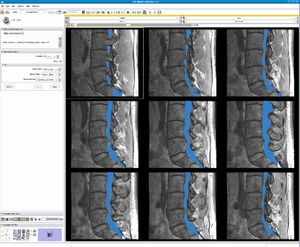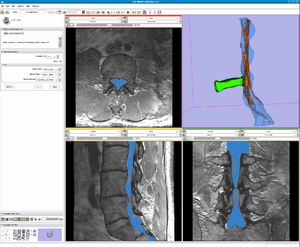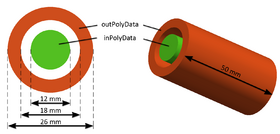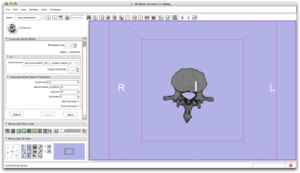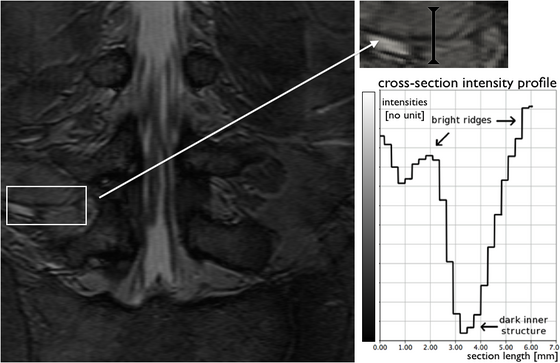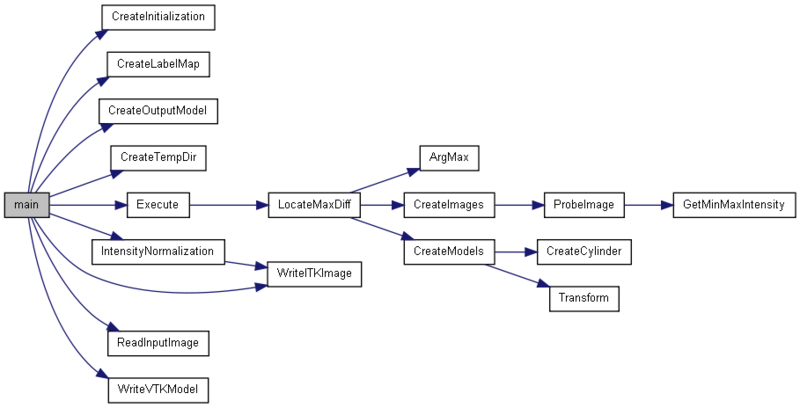2010 Winter Project Week Spine Segmentation Module in Slicer3
Our goal is to develop a Slicer module to automatically segment the spine in 3D MRI images to help during the surgical removal of herniated discs. (See a video)
The SpineSegmentation Slicer module has been presented at the NA-MIC Project Week 2010 in January. It leverages the expertise of the NA-MIC community in medical imaging and quality software.
Key Investigators
- Sylvain Jaume (MIT)
- Martin Loepprich (University of Heidelberg)
- Ron Kikinis, Steve Pieper (BWH)
- Polina Golland (MIT), Ehud Schmidt (BWH)
Objective
We are developing a Slicer module to segment the region within the thecal sac in MRI images of the spine. Our objective is to provide a segmentation and visualization tool to improve the treatment of disc herniation. The structures of interests are the cerebro-spinal fluid (CSF), the discs, the vertebrae and the spinal nerves. The CSF has a double role: it acts as a lubricant between the vertebrae and as a mechanical insulation to protect the nerves from outside shocks. The main challenge is to perform the segmentation in a fully automated way.
Approach, Plan
Our plan for the project week is to integrate our code into Slicer 3.5. Our code analyzes the intensity profile of different regions in the MRI and automatically defines the optimum region for the CSF.
Progress
The algorithm has been implemented in Slicer 3.5 as an extension module. This volumetric pattern recognition algorithm is fully implemented as a Slicer module using ITK and VTK. The module has been tested on data sets acquired at Brigham and Women's Hospital.
Screenshots
 Our goal is to develop a Slicer module to automatically segment the spine in 3D MRI images to help during the surgical removal of herniated discs. (See a video) |
References
- Segmentation using Slicer 3.5, EMSegment module






